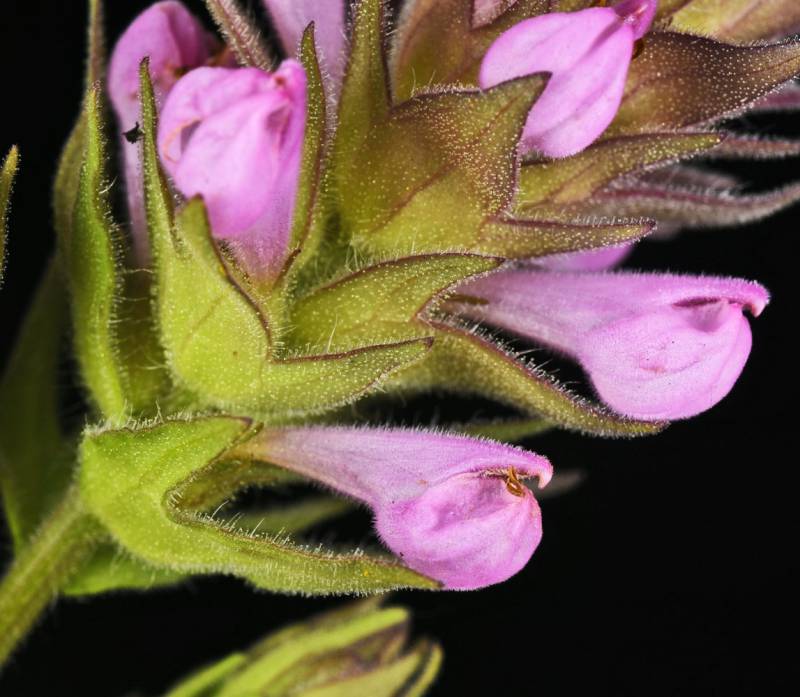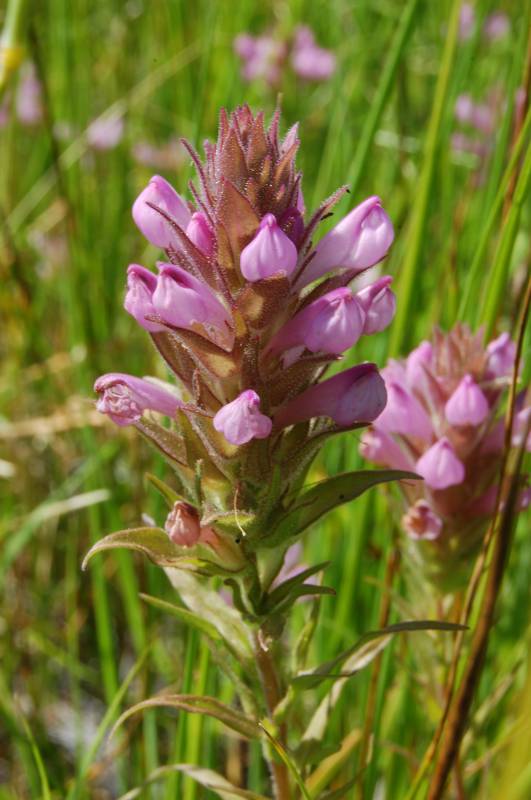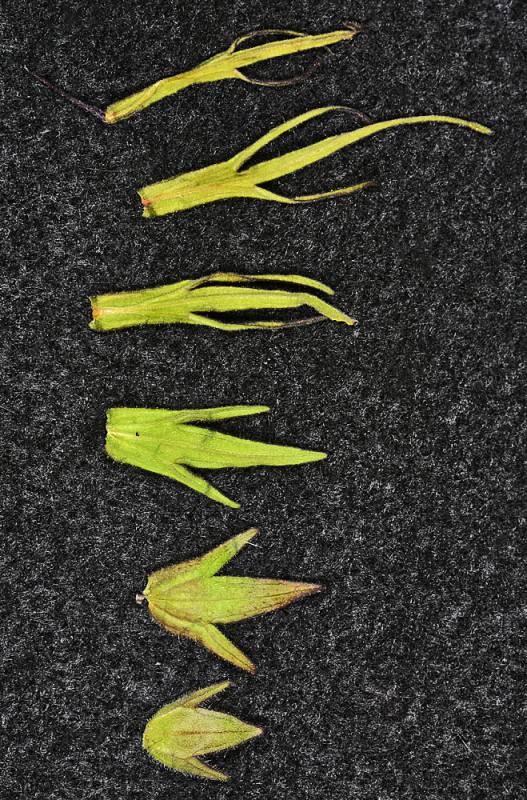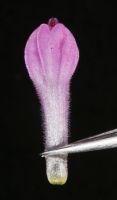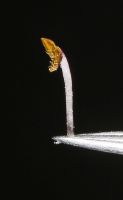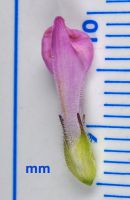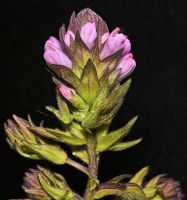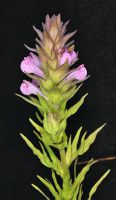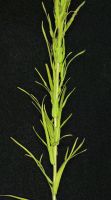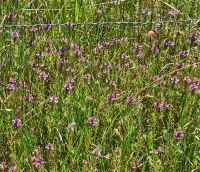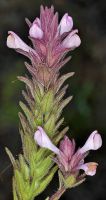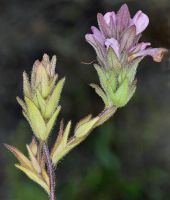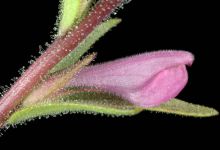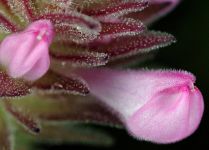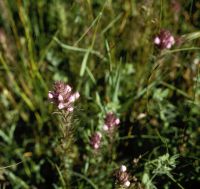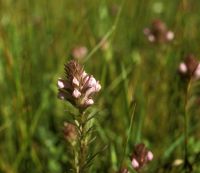Distribution: Occurring chiefly east of the Cascades crest in Washington; southern British Columbia to northern California.
Habitat: Meadows at low elevations.
Flowers: June-August
Origin: Native
Growth Duration: Annual
Conservation Status: Threatened in Washington (WANHP)
Pollination: Bumblebees, bees, flies, moths
Slender annual, the stem 1-4 dm. tall, simple or branched above; herbage pubescent throughout, with longer hairs in the inflorescence.
Leaves alternate, wholly cauline, narrow, 1.5-3.5 cm. long, the lower entire, the upper trifid and passing into the broader, divergently tri-lobed bracts of the inflorescence.
Inflorescence a dense, bracteate spike, becoming elongate; calyx 2-cleft, with bifid segments; corolla 12-20 mm. long, purplish-pink, bilabiate, gradually expanded to the inflated, toothless lower lip; upper lip hooded, enclosing the 4 stamens, short and broad, only slightly longer than the lower lip.
Capsule.
Publication: Scroph. Ind. 13. 1835.
PNW Herbaria: Specimen records of Orthocarpus bracteosus in the Consortium of Pacific Northwest Herbaria database.
WA Flora Checklist: Orthocarpus bracteosus checklist entry.
OregonFlora: Orthocarpus bracteosus information.
E-Flora BC: Orthocarpus bracteosus atlas page.
CalPhotos: Orthocarpus bracteosus photos.
USDA Plants: Orthocarpus bracteosus information.

